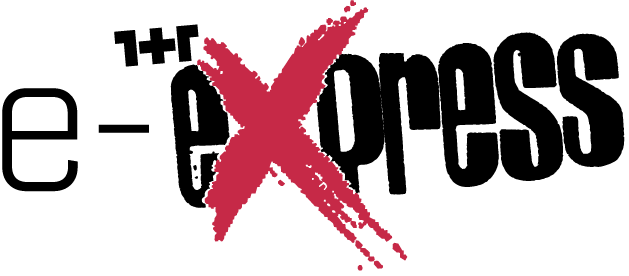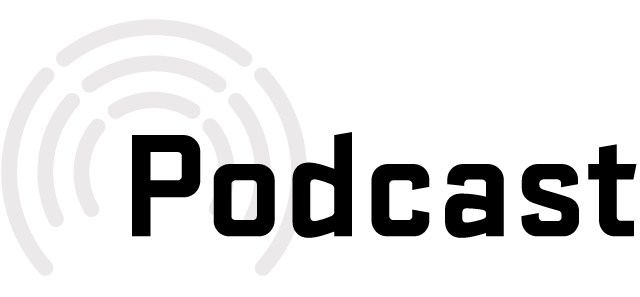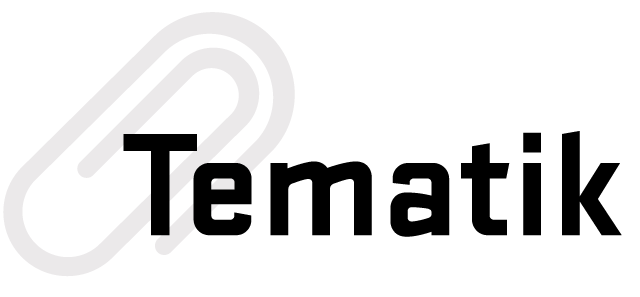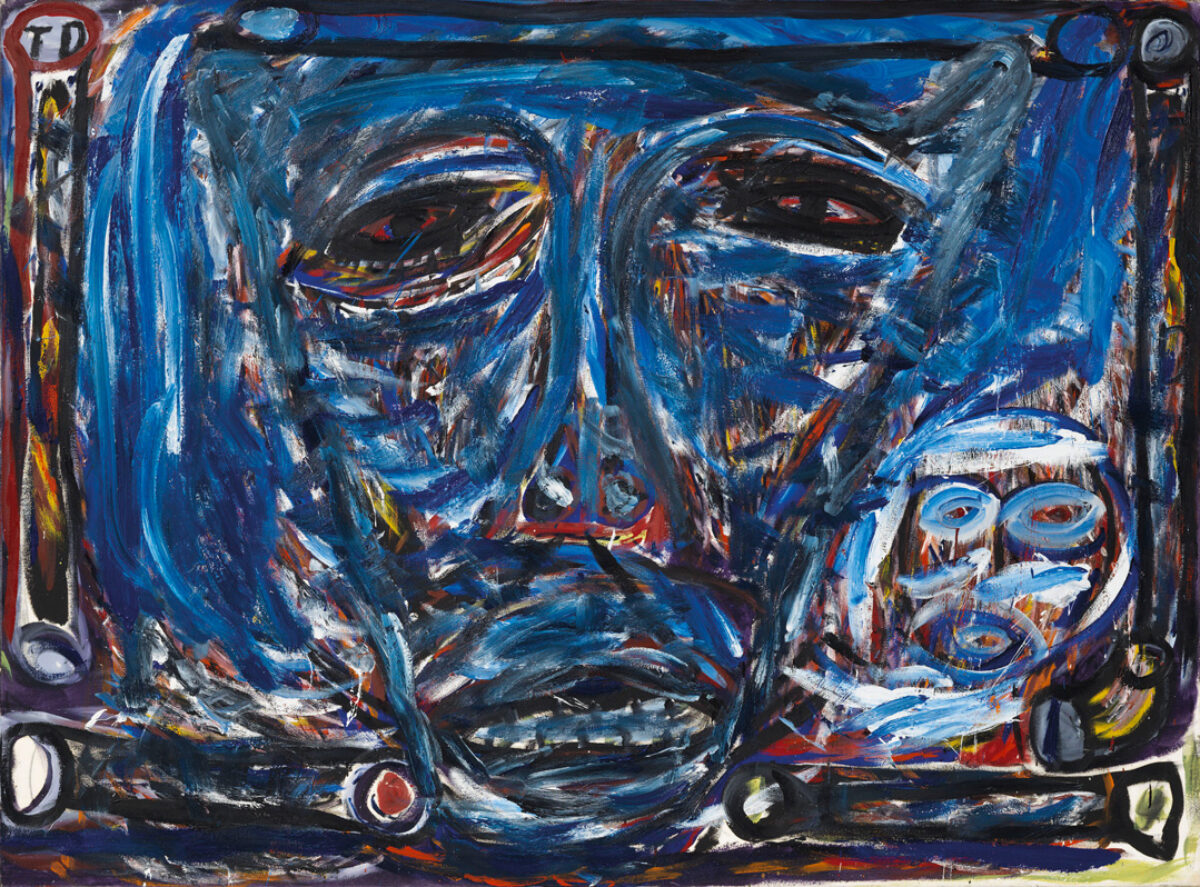Let’s start with the definition of the term. How do you define paramilitarism?
Ayhan Işık: Distinct from the armed units of the state such as the military or the police, armed groups that take side with the state, especially during civil wars, are defined as paramilitary groups. We can also describe paramilitary groups as informal or semi-formal. These groups are activated during specific periods, and then deactivated, and they can be diverse in category or in quantity. Their group size can range from a handful of people to hundreds of thousands of people. There can be a variation in nomenclature for these groups such as vigilante, militia, pro-state militia, death squads, etc. The term vigilante is used for a mob, persons or groups, who take the law into their own hands in full awareness of the illegality of their actions, in order to support the state against a person or a group, which, in their consideration, is violating the law.
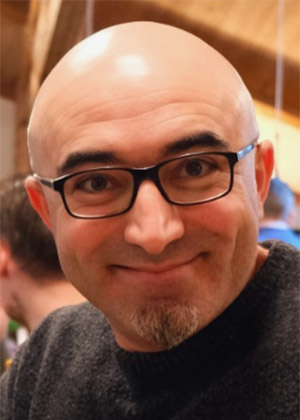
Among these groups, there are those that voluntarily set a mission for themselves and mobilize accordingly, as well as those that have been established or are oriented by the state itself. But vigilante paramilitary groups are only one of such categories; and they are also the most amateur ones. An example of vigilante paramilitary groups would be the ultranationalist mobs of looters, who were released into the streets during the Istanbul pogrom and the pogroms against Alevis. Another category of paramilitary groups is armed militias. An example for this category from Turkey would be village guards.
The more radical ones, which have received training and form a smaller group among village guards are called death squads. An example of death squads is JİTEM (Turkish acronym for “Gendarmerie Intelligence and Counter-Terrorism”). As such, paramilitary groups is a generic term used for a considerably wide spectrum of armed groups, diverse both in terms of their numbers and capacity for the use of violence. Fundamentally, they position themselves on the side of the state during conflicts or moments of societal-political crisis, while displaying a range of differences from the state’s official security forces.
You used the word “Mob”. This concept seems to signify a lack of order. Are paramilitary groups “rudderless”? How do they organize and mobilize?
No, they are not rudderless. But their organizations and their mobilizations are diversified. Informal paramilitary groups have always been in motion during the Thrace pogroms in 1934, the Istanbul Pogrom against non-Muslims in 6-7 September 1955 and pogroms against Alevis from 1970 to 1995. They adopt an ultranationalist ideology also with an Islamist tuning. They attack specific neighborhoods and houses through diverse provocations and channelisations. Some pro-state groups get armed or are being armed especially when there is an incident similar to civil war. These groups are sometimes formed by the state itself and other times they emerge themselves and then are supported by the state.
Paramilitarism is the dark side of the modern state. The state “claims the monopoly of the legitimate use of physical force” and its bodies that monopolize this legitimate violence are the police and the army. However, there are “tasks” that cannot be carried out by official security forces, because of the laws that states are bound by.
Sabri Yirmibeşoğlu, who was a soldier during the 1955 pogrom, and who reached important ranks in the army afterwards, said, “6-7 September [the Istanbul pogrom in 1955] was the work of the Special Warfare [Department]”, however, he later denied this statement. Yet it is known that civilians and certain groups had been prepared beforehand to take part in the pogrom. Specific key persons and groups are in play in the organization of such groups. If a massacre or a pogrom is to be carried out, if certain people are to be forced into exile from one place to another, there are individuals that are informed beforehand, so that they prepare for potential armed conflict.
If we go back to an even earlier period, in 1894-1896, enormous massacres were carried out against Armenians in many regions of the Ottoman Empire. Over a period of two years, in massacres carried out in an area that stretched from the Black Sea to Kurdistan and to Istanbul, 100 to 300 thousand Armenians were murdered according to historians. This constitutes one of the largest massacres before the Armenian Genocide. For the massacre in Istanbul, porters were deployed mostly, because they were strong. They were all carrying the exact same type of cane, prepared for the purpose beforehand. In other words, there is significant documentation that, before the Muslim community was lead to public indignation with rumours claiming, “The Armenians are being provoked by the West”, people had been disposed through ideological and economical motivation, and that they had been assigned certain duties.
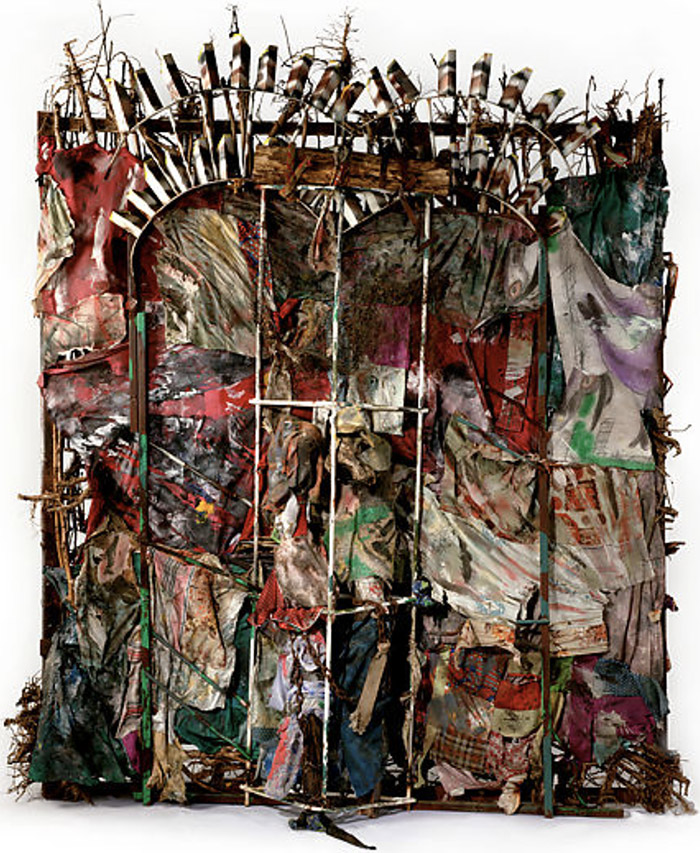
Before the Thrace Pogrom in 1934, the community had been ‘disposed’ through the press with various news reports targeting Jewish society, claiming, “The Jews own the entire capital in this region, all we can do is work for them”. Something similar happens in 1955. Then it is the same all over again with the Alevi pogroms… The starting point is generally a rumour tossed around; the mob expected to join the pogrom is disposed through the exaggerated, biased and outright false news reports published in the local press. The crowd mostly takes action following a provocation. In brief, we observe a process wherein specific individuals from pro-state groups trigger the event, and then the larger masses get involved.
These are the groups that the state uses to patch up its various weaknesses. And since they are patches, they can be unstitched and rearranged. A third requirement of the state in this context is what is known as “plausible deniability”.
How is the relationship between the modern nation-state and paramilitary groups?
Paramilitarism is the dark side of the modern state’s agency. Based on Weber’s well-known definition, the state “claims the monopoly of the legitimate use of physical force” and its bodies that monopolize this legitimate violence are the police and the army. These are legitimized and official groups for applying violence on behalf of the state. However, there are certain types of “tasks” that cannot be carried out by official security forces, because of the constitution and the laws that states are bound by. In other words, the legal frame prevents states from conducting killings, pogroms, massacres etc.
As we also see in historian and sociologist Charles Tilly’s work titled War Making and State Making as Organized Crime, as the framework of the concept known as the modern state becomes clearer, the state emerges as a power that can claim the monopoly of using violence. Still, there is an intertwined mechanism, whereby the monopoly of using violence is delegated to subcontractor groups and then taken back. That is why the state is not a simple mechanism, where we can say, “these institutions are official institutions, while those others are unofficial”.
The modern state has a complicated relationship with paramilitarism.While the term had been mostly used for civilian groups formed by the fascist regime in 1930s Germany, it gained prevalence from the 1950s on. Paramilitarism is an expression mostly used for pro-state, semi-formal armed groups.
The modern state has a complicated relationship with paramilitarism. In the early modern era, pirates, bandits or small gangs sometimes requested the support of the state, or collaborated with it. By the end of the 19th century and the beginning of the 20th century, as the outline of the modern state came was drawn and as the groups that used violence assumed official status, the structure and mission of paramilitary groups also began to become clearer. While the term had been mostly used for civilian groups formed by the fascist regime in 1930s Germany, it gained prevalence from the 1950s on. Paramilitarism is an expression mostly used for pro-state, semi-formal armed groups.
This renders debatable the definition of the state on the basis of its monopoly of violence. To be clearer, the state owns the monopoly of violence through its official institutions. However, it allows semi-formal groups or informal groups, which are not part of the state’s hierarchy of security forces, to use violence for a limited period or within a limited territory. In conclusion, we could even propose a more ambitious claim: The modern state never did hold an absolute monopoly over the use of violence, rather, as described by Tilly, the character of the modern state, as a state shaped by organized crime, continued to exist without interruption.
You point out that the outline of paramilitarism became clearer in the last 100-150 years. Could we say that the nation-state has become more dependent on paramilitary groups?
Yes, the modern state needs paramiltary groups. According to the data reviewed by a research team working on paramilitarism at a university in Germany, paramilitary groups have been used in 81% of the civil wars that have taken place around the globe from 1981 to 2007. These groups are being used almost everywhere where there is an internal conflict. But, we must ask, why do states need such groups? The emergence of the nation-state also created a certain way of thinking that sanctifies the nation’s security.
The starting point is generally a rumour tossed around; the mob expected to join the pogrom is disposed through the exaggerated, biased and outright false news reports published in the local press. Specific individuals from pro-state groups trigger the event, and then the larger masses get involved.
The concept known in Turkish as ‘devletin bekası’, or ‘the perpetuity of the state’, and more generally defined as ‘national security’ has been in use for more than a century. National security and state perpetuity have been the pretext for the formation of paramilitary groups especially during internal conflicts. But the state does not expect these groups to defeat the opposite side by the use of weapons. The target here is to interrupt the link between the opposite side and civilians. This is also what I argue in my thesis.
When the state faces a guerilla movement or a national liberation movement, paramilitary groups are tasked not with fighting this movement, but with eliminating the civilians who are alleged to support this movement. A second scenario is when former soldiers, or figures previously positioned within the state’s security mechanisms, are tasked with leading the formation of such groups when the state’s irregular war capacity is weak. These groups are both trained and equipped, and cost less to build. In terms of economic cost, there is a serious difference between establishing a paramilitary group and a fully-equipped official unit.
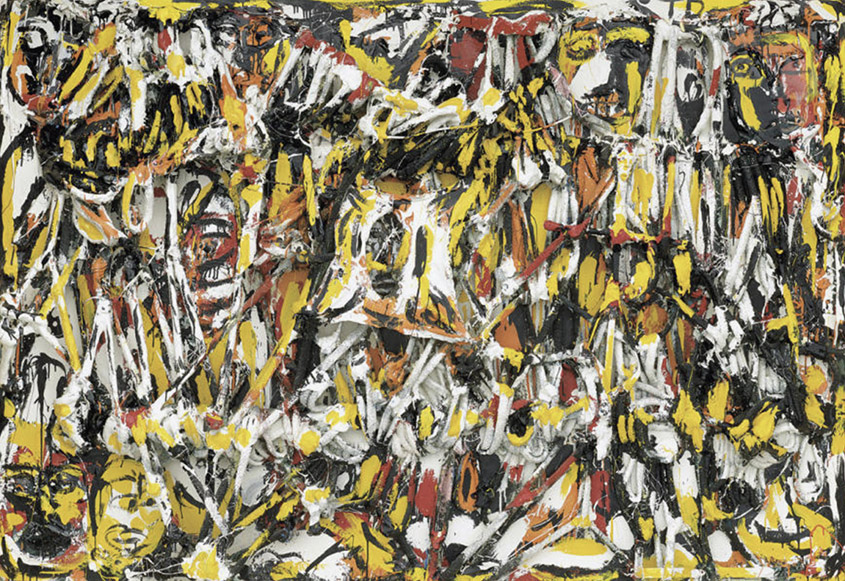
These are the groups that the state uses to patch up its various weaknesses. And since they are patches, they can be unstitched and rearranged. A third requirement of the state in this context is what is known as “plausible deniability”. When these groups land the government in trouble because of any of their illegal activities, any link can be easily denied. The state will declare, “We have no knowledge, these are illegal groups, they are not under our control”. Back in the day, Süleyman Demirel (the 9th President of Turkey) called them “non-routine groups”. This deniability also renders the paramilitary groups useful for the state.
Which paramilitary groups have been formed since the Ottoman period? How have they been used, and how were they later terminated?
To understand this, we have to look at the reign of Abdul Hamid II. One of the best-known entities that may be described as paramilitary groups is Hamidiye Alayları, the Hamidiye Regiments. Based on the Kazakh and Russian experiences, these regiments were established in 1891 upon Abdülhamid’s order. Sunni Kurds constituted the majority of what made up the more than 60 regiments. After the Committee of Union and Progress (CUP) took over power, the name of the Hamidiye Regiments was changed and they became Aşiret Alayları, the Tribal Light Cavalry Regiments. They also took part in World War I. Afterwards, they were gradually deactivated. But an official record from 1928 incorporates documents which indicates that these groups were still included in a list of the state’s armed units. In other words, these groups had not been fully terminated as late as the year 1928.
One of the best-known entities that may be described as paramilitary groups is the Hamidiye Regiments. They were established in 1891 upon Abdülhamid’s order. Some groups within the Hamidiye Regiments took part in attacks and massacres against Armenians.
I think there were two principal reasons for the establishment of the Hamidiye Regiments. First, the Ottoman Eastern politics of the era was geared towards preventing the rise of Armenian national consciousness and the emergence of nationalist groups. From the mid-1890s on, Armenian political movements emerge in Erzurum and Van. This was a period of remarkable enlightenment in Armenian society and political demands were being expressed. Following the Congress of Berlin in 1878, certain decisions were taken towards autonomous government, especially regarding the Six Vilayets, or provinces (Erzurum, Van, Mamüretü’l Aziz, Diyarbekir, Sivas, Bitlis). Given all these factors, the Hamidiye Regiments constitute a structure aimed to prevent the rise of Armenian national consciousness, or Armenian movements. Some groups within the Hamidiye Regiments took part in attacks and massacres against Armenians.
There was also a second factor in play in their establishment. Kurdish historians consider the Ubeydullah Rebellion, which took place in 1879-1880 as the first instance of the awakening of Kurdish nationalism. From an intellectual viewpoint, traces of Kurdish nationalism can be traced back to a poem by Hacî Qadirê Koyî. Thus, the 1800s were also a nucleic period in terms of the formation of Kurdish nationalism, too. From the early 1800s on, the Ottoman Empire experiences a loss of territories, extending from Serbia to Greece. We are talking about a period in which the Empire was gradually shrinking. Simultaneously, this was also a period that witnessed efforts of centralization. If Kurdish nationalism was to rise and organize, then Kurdish national movements would emerge and they would demand an independent Kurdistan. Armenian national movements had already appeared, Armenian nationalism was developing, debates over demanding independence or autonomy were already taking place. The Hamidiye Regiments were formed to prevent this: On the one hand, they were to protect the eastern borders against Russia and Iran; while on the other hand, they were to suppress Armenian nationalism and prevent Kurdish nationalism. This was not a normal army, they were composed of tribal regiments.
In 1952, the Special Warfare Department (Özel Harp Dairesi), a paramilitary group, was established under the leadership of the United States. Kemal Yamak provides a detailed account of this process in his memoir: “The Special Warfare Department was established with the direct support of the Americans”. Another similar group, titled the Turkish Resistance Organization (Türk Mukavemet Teşkilatı), in which Rauf Denktaş was also active, was established in Cyprus towards the end of the 1950s.
In a similar way, the CUP formed the Special Organization (Teşkilat-ı Mahsusa) as a paramilitary group. The Special Organization was established either in 1913 or 1914, according to different sources. It was a secret organization established by Enver Pasha. It was partially official, but its actions mostly fell outside the official framework. On the current website of the National Intelligence Organization (Milli İstihbarat Teşkilatı, MİT), under the historical background section, there is a reference to the pioneering mission of the Special Organization. From 1914 to 1916, there were paramilitary youth groups in different regions, which were formed by the Special Organization. Moreover, during the formation of these groups, Belgian and German military officers were consulted regarding organization and management. In local areas, in addition to the youth organizations, gangs were also formed during the war. For instance, Mehmed Reşid became Diyarbekir governor in 1915. Reşid, who was Circassian, committed massacres using different gangs and groups he formed from Circassians, Kurds and Arabs during the Armenian Genocide and he formed a network of economic profiteering based on the grabbing of Armenian properties.
How and against whom were the paramilitary groups of the Special Organization used?
They were used during the Armenian Genocide in specific and during the genocides against Christian communities in general. From 1913 until 1922-1923, there was a period of genocides, not only against the Armenians but also against the Assyrians and Anatolian Greeks. In a similar way to Abdülhamid’s policies, the Special Organization and the gangs it formed in local areas were also used in this process. After the Ottoman Empire was defeated in the war in 1918, the Special Organization was officially abolished, however, its tradition persisted under different names and groups such as Karakol, another clandestine organization.
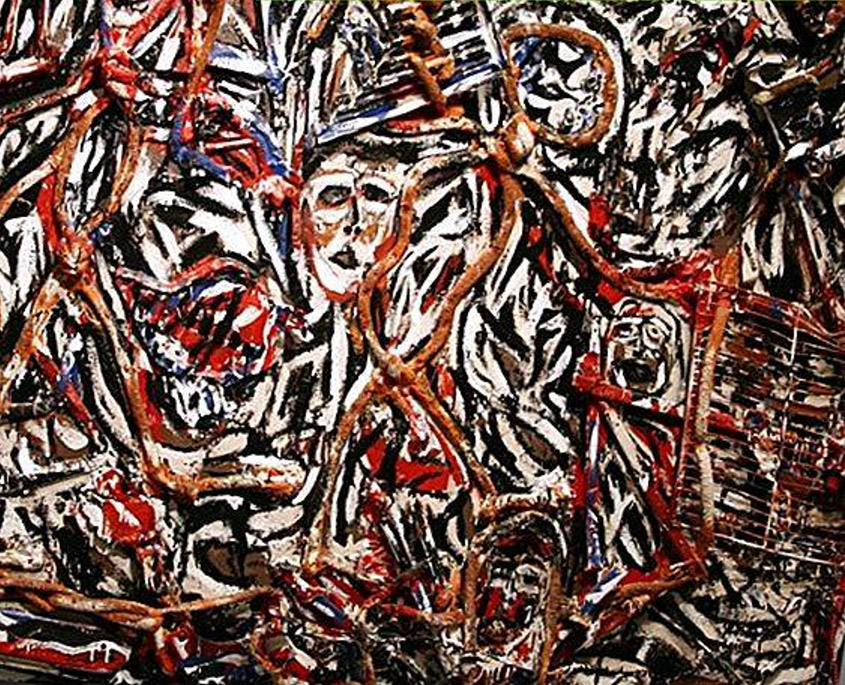
The period from 1918 to 1923 marks the transition from the Empire to the Republic; the regime changed. However, Mustafa Kemal, the leader of the transition period and of the Ankara government, followed a similar policy regarding paramilitary groups. During this period, several gang leaders such as Topal Osman, İpsiz Recep and many other local and regional gang leaders stand out. They commit many operations of “cleansing”, annihilation and squashing against non-Muslims in different regions. For example, Topal Osman is known for his massacres against the Pontus Rums (Anatolian Greeks in Black Sea region) and the Koçgiri Kurds. He later became the head of Mustafa Kemal’s Koruma Muhafız Birliği, the Presidential Guard Regiment. However, he was subsequently judged to be a threat in Ankara and was killed.
The Nationalist Movement Party (Milliyetçi Hareket Partisi, MHP), had commando training camps for members of the ülkücü [“idealist”] youth in many parts of Turkey. Thousands of people received military training from ex-soldiers. These groups were used against the left by different units of the state in the second half of the 1970s.
So, there is a continuity between Abdul Hamid II, CUP and Mustafa Kemal in their use of the paramilitary groups…
Yes, there is. After the state became more centralized and took the form of a nation-state in the 1920s, several minor and major rebellions took place, and they were repressed through massacres. The Sheikh Said rebellion in 1925, the Ağrı Rebellion between 1926 and 1930, and the Dersim Genocide in 1938… The state used these groups in all of them. In the same manner that the Special Organization used Kurdish, Arab and Circassian gangs during the Armenian Genocide, after 1925, the state used pro-state gangs or tribal militia, in other words, paramilitary groups, wherever there were clashes. The General Staff of the Turkish Armed Forces has a two-volume publication in which it states that local militia were used.
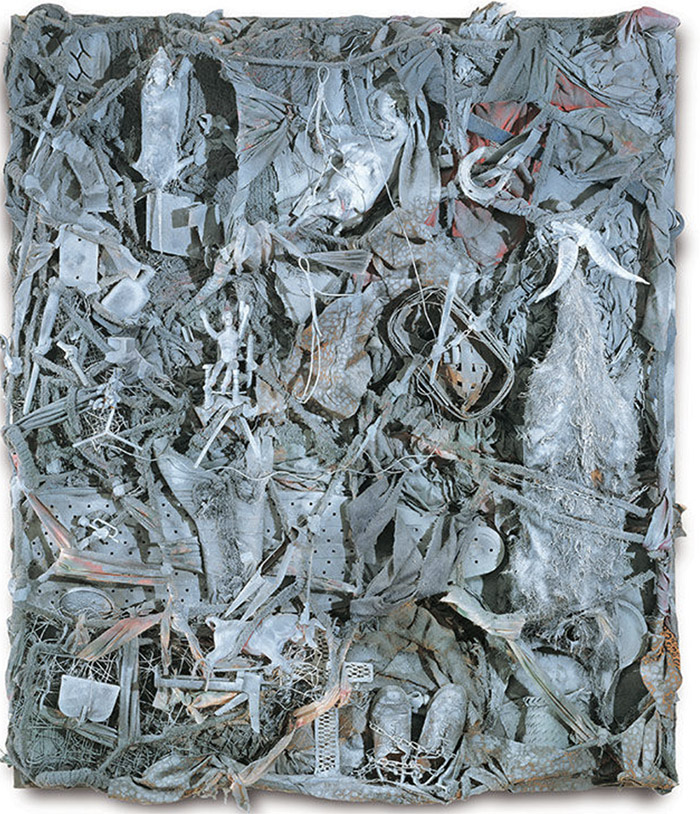
What form does paramilitarism take after the early period of the Republic?
After 1950, as Turkey joined NATO and officially reoriented toward the West, paramilitarism began to be applied in a more systematic manner. However, the 1950s were a different period. From 1923 to 1950, power was in the hands of Mustafa Kemal and İsmet İnönü. However, in the 1950s, in other words, during the multiparty period, a rift appeared. This is the period when the mechanism we refer to as the ‘deep state’ began to take shape. In addition to the official face of the state, which came into power through elections, another, different mechanism which included the military, bureaucracy, politics and the business world emerged in the background.
A dual form of government came into play, where the real holders of power lurked n the background, while those visible to the public merely went through the motions of government. It was in such a climate that in 1952, the Special Warfare Department (Özel Harp Dairesi), a paramilitary group, was established under the leadership and economical support of the United States. Kemal Yamak, who was also the commander of Diyarbakır Prison during the 1980s, provides a detailed account of this process in his memoir: “The Special Warfare Department was an organization that was established here with the direct support of the Americans”.
An example of death squads is JİTEM. The army repeatedly denied its existence. However, memoirs of confessors and journalistic investigations reveal that JİTEM is related to the Regional Gendarmerie Commandment established in Diyarbakır in 1987.
Until the 1970s, this institution was directed with the support of the United States. And the reason for this was that Turkey was located right beside the Soviet Union. The aim was to form a unit against ‘the communist threat’. Similar secret groups were established in many other NATO member states and then they were disbanded after the fall of the Soviets. While the mission ascribed to the paramilitary organization by the American rationale was restricted to the power balance of the Cold War era, Turkey used this organization against all opposition groups.
Another similar group, titled the Turkish Resistance Organization (Türk Mukavemet Teşkilatı), in which Rauf Denktaş was also active, was established in Cyprus towards the end of the 1950s. During the 1960s and 1970s, there were also other groups like the Association of Struggle Against Communism (Türkiye Komünizmle Mücadele Derneği), the National Turkish Students Union (Milli Türk Talebe Birliği) and Association of Incursionists (Akıncılar Derneği). After 1968, the Grey Wolves (Ülkü Ocakları) organization was formed. Of course, I am not suggesting that all these groups are homogenously established by the state as paramilitary groups. Rather, the nuclei of these groups included armed radicals or people who were provided with arms. Furthermore, the process cannot be completed solely through the guidance of the state, another defining factor is the ideological motivation of those who join these groups.
In the 1970s, a variety of groups emerged with the aim of repressing leftwing opposition, the newly-rising Kurdish parties and the Alevi awakening. These groups adopted the mission of defending the state. They were used against any group perceived as being part of the opposition. For instance, commando camps were established. From 1968 until the end of 1970s, the Republican Villagers Nation Party, the precursor of the Nationalist Movement Party (Milliyetçi Hareket Partisi, MHP), had commando training camps for members of the ülkücü [“idealist”] youth in many parts of Turkey. Thousands of people received education in various fields including military training from ex-soldiers. These groups were used against the left by different units of the state in the second half of the 1970s.
Hizbullah was a group based in Batman and organized around bookstores, especially in Diyarbakır. Among the groups we mentioned, the first three were formed by the state; however, Hizbullah was used as a subcontractor by the state.
Kurdish movements that emerged from the 1970s on, like socialist movements, were crushed with the 1980 coup d’etat. When the Kurdistan Workers’ Party (Partîya Karkerên Kurdistanê – PKK) started an armed struggle in 1984, this time, different paramilitary groups stepped in. Of course, those that already existed were also employed. During the period from 1984 to 1991, for about six to seven years, the Turkish state thought that it could fight the PKK by establishing paramilitary groups, and without changing the existing structure of the army or the official security forces. The state had never faced a guerilla movement like the PKK, which could be described as more modern, and geared towards long-term conflict.
The state’s first reaction was to establish the village guard system in 1985. From the establishment of the temporary village guard system until the beginning of the 1990s, the number of the guards ranged from 14 to 15 thousand. This rose to 65-70 thousand in the period from 1991 to 1995. This is almost equal to the strength of a mid-scale country’s army! During the same period, there were also certain groups within the Police Forces assigned with specific tasks, such as the Special Team (Özel Tim). Ayhan Çarkın [a former member] provides a detailed description of the group in interviews conducted with him. Such groups act like official groups of the state, but based on their actions and activities, we could describe them as semi-formal groups.
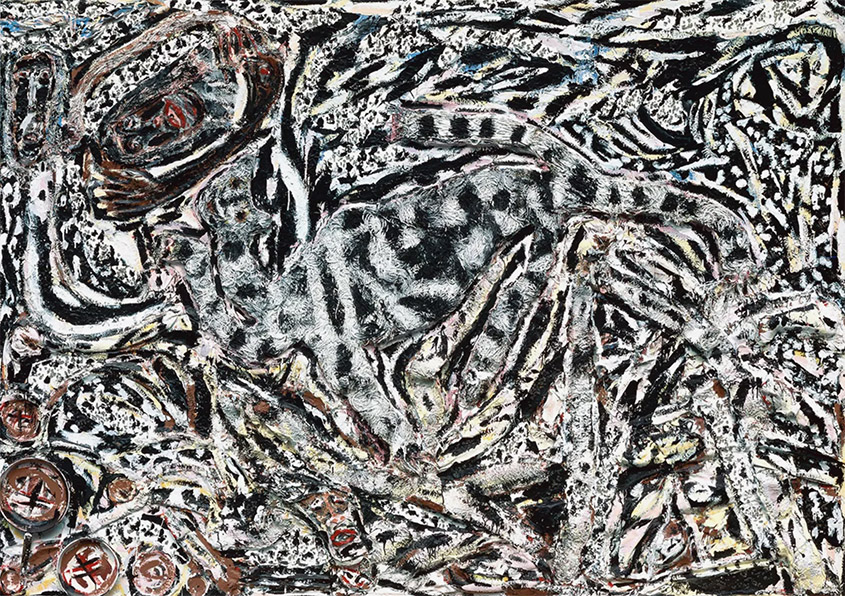
How do you define semi-formal groups?
Paramilitary groups are either semi-formal or informal. Officially, they are tied to or connected with a unit, but their connections and their responsibilities are not clear in the legal sense. Another structure we could describe as semi-formal on the basis of its link and association, its centre of command and the legal significance of its activities is Özel Tim, the Special Team, of the 1990s. Although they were part of the hierarchy of the police force, their hiring process was much more complicated and the newspaper reports of the period state that people put their names down at the offices of the MHP [the ultranationalist Nationalist Movement Party] to be recruited by the Special Team.
The MHP was not even a coalition partner at the time; so, it should not have had a say in recruitment to the police force. The village guards are also in the semi-formal group. They are affiliated with the gendarmerie, but they do not have an official position within the military hierarchy. For instance, one village guard is a farmer; another one is a storeowner for instance; when there is an [military] operation they all have to take part in the operation.
We see that the state is both forming and employing paramilitary groups, that are similar in some ways to those used in the 1990s and in some ways to those used even before that. Currently, the state is reorganizing and using the paramilitary groups from the 1990s.
Is JİTEM also included in the semi-formal groups?
No, JİTEM was an informal group, because no state institution officially accepted its existence. The army repeatedly denied its existence. We don’t know exactly what year JİTEM was established in either. However, memoirs of confessors and a number of journalistic investigations reveal that JİTEM is related to the Regional Gendarmerie Commandment established in Diyarbakır in 1987. Again, both Arif Doğan and Cem Ersever are known as founders of JİTEM and their statements indicate that JİTEM was established as a group affiliated with the Gendarmerie Intelligence, in 1987. In the same year, when the martial law that had been in place since 1978 was removed, a state of emergency was declared in certain cities.
Then, there is also Hizbullah. This was a group based in Batman and organized around bookstores, especially in Diyarbakır. In a period from 1991 to 1995, Hizbullah applied extreme violence against the PKK, and more specifically against pro-PKK civilians. Among the groups we mentioned, the first three were formed by the state; however, Hizbullah was used as a subcontractor by the state. Surely, there is also an ideological conflict. Hizbullah targets PKK by declaring it to be kafir, or non-believers, and the PKK describes Hizbullah as Hizbul-kontra [a faction of the counterguerrilla]. JİTEM and the Special Teams were made up of Turkish ultra-nationalists and [PKK-]confessors. During Tansu Çiller’s government, a job posting for Special Team recruitment announced, “Turks sought for the Special Team”. On the other hand, the village guards and Hizbullah were almost completely made up of Kurds.
What is the relationship between the official army and the semi-formal groups? Do they collaborate, do they work together?
The main target of paramilitary groups is not the guerilla forces themselves; they target the civilians who support the movement (PKK). They are mostly tasked with intelligence. JİTEM was, after all, a squad affiliated with Gendarmerie Intelligence. The village guards know the territory very well. The Special Teams were active in the peripheral areas of cities. And Hizbullah was active in the city in the period after 1991. Hence, these groups were formed or used by the state for intelligence purposes from 1984 to 1991. However, in the early 1990s, a significant change took place, this was a transition period when the PKK gained mass support, the Gulf War began, the Soviet Union collapsed, new definitions of war emerged and low intensity wars and internal conflicts spread across the globe. Thus, the state also changed its conflict strategy with the PKK and switched towards an increasingly mobile army.
Paramilitary groups, initially formed for intelligence purposes, were transformed into death squads. Often their targets were local community leaders. The picture can be seen clearly if one looks at cases of unsolved murder and enforced disappearance. The existence of paramilitary groups persisted until the early 2000s, but their activities were diminished by then. As the Islamist government with a liberal discourse came to power in the early 2000ss, along with accession talks held with the European Union, these groups were further pushed towards the background, some were deactivated and some others, such as Hizbullah, were terminated.
How was Hizbullah terminated? Or was it really terminated?
By the second half of the 1990s, more than five thousand people were arrested on charges of Hizbullah membership. Hizbullah was a mechanism; the state employed it during the period when it needed or made space for them to use of violence against the PKK, and then it dissolved it.
Are there other semi-formal or informal groups beside JİTEM, the village guards, the Special Team and Hizbullah?
In 1996, especially with the Susurluk scandal, it was revealed that many secret groups had been formed by state institutions. There may be many other groups within the intelligence organization, the police force or the army, but we do not know the details because archival records are not accessible, these are the state’s secret records. Based on existing resources, the reports prepared by Kutlu Savaş and the Grand National Assembly of Turkey (Türkiye Büyük Millet Meclisi – TBMM) in 1997, as well as the work of certain journalists, it is possible to access some information. There are some crucial investigative reports prepared by journalists and there are also some ex-soldiers’ memoirs.
By departing from these resources and interconnecting them, we can reach an outcome. A few articles by İsmet Berkan were published in the newspaper Radikal. There, he states that he was shown certain archival documents and that a number of secret groups were established in the early 1990s with the approval of the National Security Council (Milli Güvenlik Kurulu – MGK). Yet, we do not know exactly how many such groups were established, who their members were or what kind of activities they conducted. Still, Mehmet Ağar did say, “We conducted a thousand operations on behalf of the state”: he was probably referring to operations conducted by these groups.
What about the period that begins in 2015, which has made many ask, “Is this the 1990s all over again?” Does this period display any specific characteristics that set it apart from previous periods?
The period that began in 2015 continues. We see that the state is both forming and employing paramilitary groups, that are similar in some ways to those used in the 1990s and in some ways to those used even before that. Currently, the state is reorganizing and using the paramilitary groups from the 1990s. In the 1990s, when the issue of paramilitary groups was brought up, either through certain parliamentary commissions or civil society organizations, the state generally denied its link to such groups. For instance, when a court asked the army or the General Staff about the existence of such a group under their command, they would deny this. The state did not want to admit its guilt before the law.
But we no longer see a similar stance of denial after 2015…
In the cities where curfews and blockades were imposed in 2015 and after, it has been said and reported by the press that groups such as Esadullah (Allah’s lions), Gendarmerie Special Operations (Jandarma Özel Harekat – JÖH), Police Special Operations (Polis Özel Harekat – PÖH) and other unnamed groups were active. What happened during 2015-2016 was a devastating destruction that took place as the whole world was watching. Especially the “Cizre basements” were the clearest example of this destruction.
Official security forces and paramilitary groups were employed together. Unlike the 1990’s, the state did not deny the actions of these groups against civilians and their crimes which can be described as war crimes based on international law; to the contrary, the state accepted and claimed such actions as its own. This is the biggest difference between the 1990s and the period that began in 2015. We are speaking of a period that is defined as a massacre and a war crime within international law and the state does not deny it.
Why do you think the state does not deny its crimes?
I think that this is related to the transformation the state underwent in the period from 2013 to 2015. I do not think that the Peace Process was a step by the Turkish state to solve the Kurdish issue. It was during that period that, as part of the power struggle between the Gülen movement and AKP/Erdoğan, the elimination of Gülenists began and Erdoğan became the sole holder of power. However, he was not in a very powerful position, the Gülen movement still had influence in the police forces. The army was not fully supporting Erdoğan. Several military staff were imprisoned on charges of membership of the Gülen movement. Erdoğan, or the government if you will, needed a legitimate step to gain support from the international arena and strengthen their weak position. I think, to some extent, that was how peace talks with Öcalan and the PKK were initiated.
I certainly do not think that the approach was, “Let’s conclude the Kurdish issue within the frame of rights and the law”. Furthermore, at a time when the Peace Process had not yet ended, in autumn 2014, the press reported that the Turkish state had prepared a plan titled Çöktürme Planı [the plan to forcea collapse, or to force on to knees]. Erdoğan’s public statements in the spring of 2015 ended the Peace Process. During the same period, it was reported that Erdoğan had reached an agreement with many ex-military staff. Several military staff who had been imprisoned were released. The peace process, which was most probably initiated to give the government more time in power, was thus dissolved as a result of the agreement between Erdoğan and his new allies.
In 2015 and after, groups such as Esadullah, Gendarmerie Special Operations (JÖH), Police Special Operations (PÖH) were active. What happened during 2015-2016 was a devastating destruction. Especially the “Cizre basements” were the clearest example of this destruction.
It has been reported in the press that according to the aforementioned plan, the existence of which has still not officially been acknowledged, hundreds of thousands of people would be forced to migrate, 10 to 15 thousand people would die during the [military] operations and thousands of people would be imprisoned –what amounts to a largescale plan of repression. This plan is reminiscent of the Dersim Report prepared by the Gendarmerie General Command in 1933-1934. Almost every step of the genocide committed in Dersim during 1937 and 1938 had been outlined in that report, which was prepared three to four years before the genocide.
Everything had been prepared beforehand. The plan was so clear that every step was duly performed. In this sense, the acts carried out in late 2014 resemble what was done in the 1930s. In October 2014, at the meeting known as the “longest National Security Council meeting”, which was held after the Kobanê protests, it is said that the state powers took the decision for war in line with Çöktürme Planı. Imagine that you have not yet officially ended the Peace Process and yet you enter into such preparation. This is indeed an indication of the framework in which the state approaches resolution and negotiations.
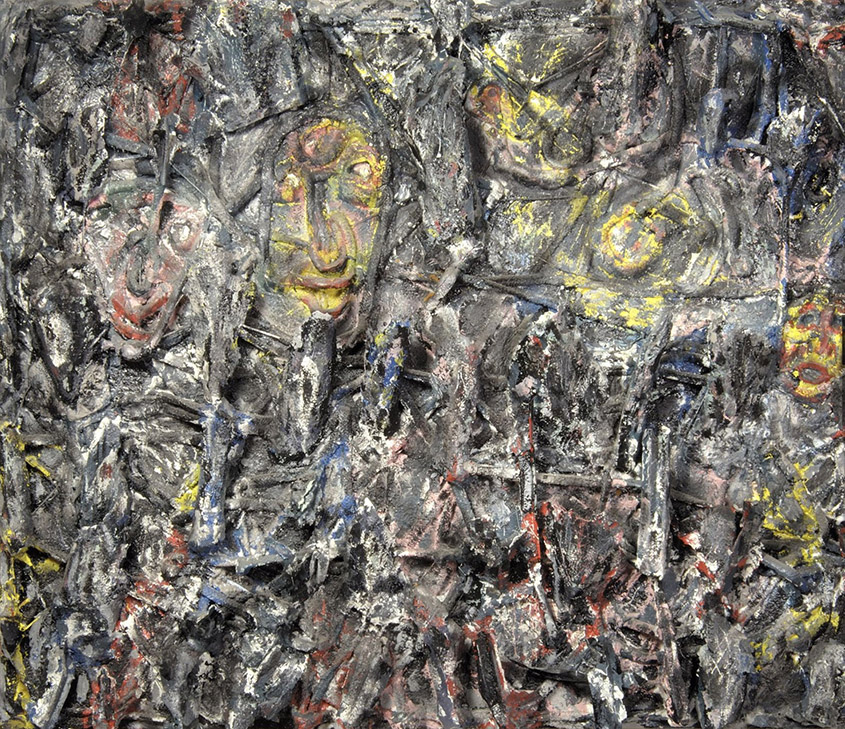
What is the relation between the “transformation” of the state which you mentioned and its claiming of paramilitary groups as its own forces?
When the alliance he had established with the Gülen movement collapsed, Erdoğan turned towards new alliances to sustain his position in power. It was also reported in the press that these new alliances were composed of the directors and elites of what is known as ‘the old state’. Along with this alliance and collaboration, state policies underwent a complete change. A message was sent out implying the possibility of large massacres, if not a genocide. During this period when thousands of people lost their lives, hundreds of thousands of people were forcibly displaced and more than ten cities were almost torn down, several illegal [military] units were employed.
Their actions were widely witnessed, as displayed in graffiti and shared on social media. In fact, we can speak of a period during which state institutions themselves were paramilitarized, as it was the case from 1975 to 1980, or from 1991 to 1996. By paramilitarization, we refer to laying the law aside and the state entering into a vicious circle of using violence through official, semi-formal or informal groups, by running the risk of breaking its own laws. This also displays the current governmental alliance’s stance of a rejection to solve many social and political issues, and first and foremost the Kurdish issue, and not adopting a policy of solution.
Has a “solution of non-resolution” been preferred regarding the Kurdish issue?
Yes, that can be said regarding the new alliance that emerged in 2014-2015. Later, MHP also joined this alliance. This political strategy, which excludes Kurds, still persists to this day. Under the title Presidential Government System, there is an effort to establish a brand new model of state order. 2014-2015 marked the process of ground preparation for this system. Paramilitary groups played a serious role during this process. The deniability in the 1990s resulted in impunity. Since the state did not officially acknowledge the groups it used, it was impossible to know who the actors were, and no one was brought before justice. The Susurluk Scandal can be considered as an exception, but even in that case not many people were sentenced for their actions.
In 2014, the Turkish state had prepared a plan titled Çöktürme Planı [the plan to force on to knees]. Erdoğan’s statements in the spring of 2015 ended the Peace Process. During the same period, it was reported that Erdoğan had reached an agreement with many ex-military staff.
From 2015 on, we know the groups that individuals belong to. Perpetrators write on walls, take photos and share them on social media. Yet, they face no legal case or investigation. In the 1990s, denial and impunity went hand in hand. As for 2015, the openness in action and impunity go hand in hand. When such instances occur in democratic or partially democratic countries, one expects prosecutors to file legal cases. Yet, that does not happen in Turkey. There is a serious level of impunity. This was also why I explained the historical background of paramilitarism. It is a tradition that displays continuity; it persists through time in different forms. The continuity of these paramilitary groups is sustained through a triple mechanism: Through individuals, through the nationalist Turkish ideology and through institutions. It encompasses a period of more than a century.
How has society become a party to crime, how does it continue to be so?
The entity known as the sovereign nation (millet-i hakime) during the time of the Ottoman Empire, which denoted the position of the Muslim majority, united around a racist and nationalist worldview after the establishment of the Republic. Let me give a simple example. Declared in 1839, Tanzimat Fermanı, the Edict of Gülhane, recognized the non-Muslim population and gave them many rights. The Muslim population, in response, rebelled in various territories, asking “How can the non-Muslim be equal to us?” This approach continued into the Republican era with Turkish nationalism in the foreground. I believe that Turkish national identity is one of the most successfully constructed identities in the world: Its foundations were laid in the late Ottoman period, its tenets were embodied in the Republic, and refusing equality with identities not included in its own category is one of its most significant characteristics.
Though unwillingly, Kemal Karpat explains very well how the human resources of the new national identity were formed. Karpat states it very clearly: From the 1850s to the 1940s, for almost a century, around 7 million people migrated to the lands that constitute present-day Turkey. There was continuous migration starting in the 1850s, with Turkic groups migrating from Crimea; a considerable Circassian population migrating in the 1860s following the genocide targeting Circassian people in Caucasia, and another considerable wave of migration from the Balkan countries in the aftermath of the Balkan Wars. We are talking about a predominantly Muslim population, who were not ethnically Turkish, but had, at later dates, adopted Turkishness.
According to the “Çöktürme Planı”, hundreds of thousands of people would be forced to migrate, 10 to 15 thousand people would die during the [military] operations and thousands of people would be imprisoned. This plan is reminiscent of the Dersim Report prepared by the Gendarmerie General Command in 1933-1934.
These new populations had been victims of inequality in the lands they came from, whereas in the lands they arrived at, they became part of the ruling power – and the lands they arrived at were not empty, they were settled in lands where mostly non-Muslim populations had been “removed” from. We see it in other examples, too, that groups of people that were subjected to myriad types of violence including genocide in the lands they once lived, often become supporters of the oppressor, and even its enforcers in the lands they have arrived at – however, this is not a matter that is questioned enough.
Barış Ünlü defines this newly constructed identity on the basis of a Turkishness Contract. What we are talking about here is an identity of Turkishness that first emerged during the reign of Abdul Hamid II and which gained significant prominence during the CUP era. Turkishness does not rest on a single ethnicity since it is nurtured by different sources, however, it is ideologically ethnicized and nationalized. It is an identity which has been expanded through the inclusion of many non-Turkish groups, and its fundamental characteristic is its failure to embrace and accept equality. If you do not accept equality with different identities, then you do not want to live with them, either. And even if you live together with them, in the words of Mahmut Esat Bozkurt [Economy and later Justice Minister of the Republican era], the message to others is, “You can only exist by becoming slaves to Turkishness”.
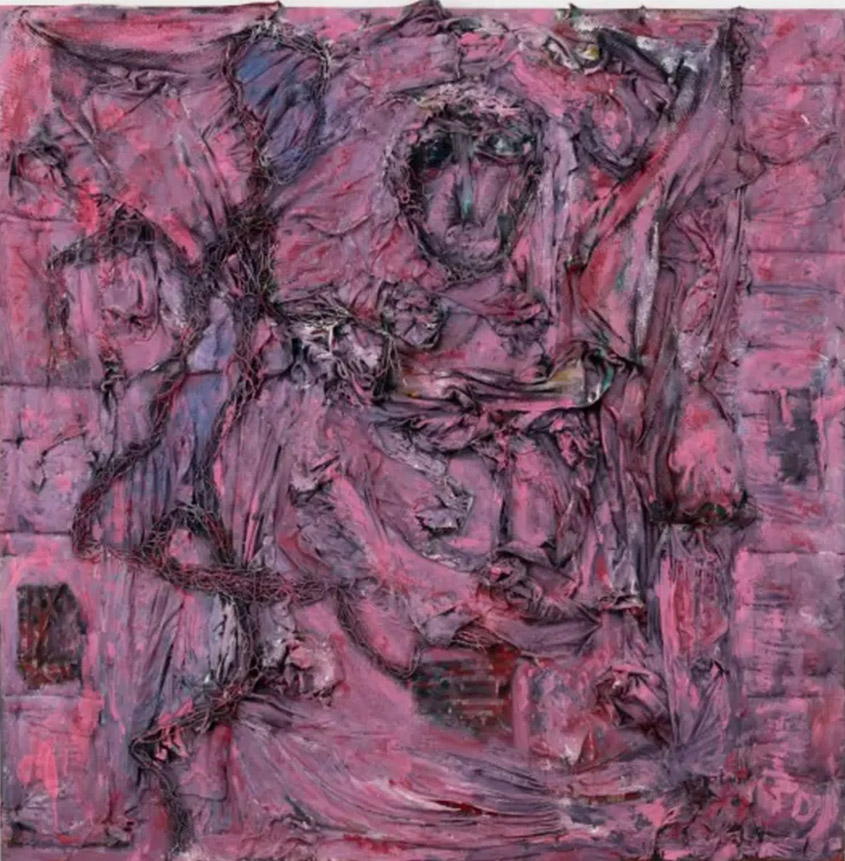
Of course, one should not deduce from this that “the whole of society is like this”; however, the adoption of inequality as a prominent social characteristic persisted for more than a century. The Muslim population in the late Ottoman period, the Muslim-Turkishness that was Turkified at a later date and then secularized, has a perception of identity that formed and was made to form over time, layer by layer. The way this particular identity acts towards other identities is characterized by a fear that they will “tear the state apart”. A social characteristic that oscillates between fear and inequality. This fear stems from their awareness that these territories, which are the remainder of the Empire, constitute the last territories they have as shelter. An examination of the education curricula of the early Republican period reveals how fear and racism go hand in hand.
Racism is the most distinct manifestation of not perceiving other groups as equal to one’s self. This mindset substantially determines the intellectual structure of current Turkish society. For instance, let us take a look at the parliament’s decisions on ‘national security’-related issues. The HDP rejects the motions, while all the other parties vote in favour: military operation to Rojava, sending troops to Libya, the Karabakh issue, condemning Europe or certain other countries in the world, denying the Armenian Genocide, rejecting criminal complaints about Alevi pogroms… The list goes on. In such situations, parties that stand in opposition to each other, act as if they shared a single brain.
Under the title Presidential Government System, there is an effort to establish a brand new model of state order. 2014-2015 marked the process of ground preparation for this system. Paramilitary groups played a serious role during this process.
We are talking about a society raised with a nationalist educational model, which started in the late 1800s, was shaped during the first quarter of the 1900s and was injected into society as a doctrine following the establishment of the Republic. Sometimes also referred as deep society, this situation describes the process of society ‘protecting the state’. When state institutions are absent, society steps in. You won’t have much difficulty in establishing paramilitary groups where there is this kind of deep society.
If, as a state, you create a perception of threat and point at a certain target as a ‘national threat’, then, people will display their attitude against this ‘national threat’. There is considerable prejudice against Kurds, Armenians, or, more generally, non-Muslim communities, and Alevis, across society. This is a process that has been building up for a century; it is a process of education, false awareness, prejudgment and prejudice. A Kurdish citizen residing in Muğla was stripped naked and forced to kiss Mustafa Kemal’s statue. It was his neighbour who forced him to do this. During massacres and pogroms, many people take the first blow from their neighbours.
A society which has not confronted its past, a society where the rule of law does not apply, is capable of creating a deep society, that when the time comes, assumes the role of the state, and creates gangs. In interviews I conducted during my research, I witnessed a number of highly interesting remarks. Some said, “The Turkish state relies more on its paramilitary groups than on its army and its police”. When we look at the paramilitary groups that emerge during periods of crisis and rupture, we see how true this is. The nationalists were employed against the leftists during the 1970s and against Kurds during the 1980s and 1990s. Thus, we can speak of a deep society, stuck in that oscillation between the fear about national security and the failure to accept equality. This is how we can discuss the support to the state’s extralegal politics that have continued for more than a century by the structure of society and a population inflated with migration.
To summarize, are we talking about a social structure that has been paramilitarized?
Yes, such an outlook can be considered as the paramilitarization of society. We have already talked about the periods when the state underwent paramilitarization: The second half of the 1970s, the first half of the 1990s, and the period after 2015. There are also periods during which society paramilitarized. We see several instances of this from the late Ottoman period up to the present day. We are speaking of a large mass of people that is ready and prepared to mobilize, when the ‘sacred tenets’ of the state are declared to be threatened. The period from 2013 to 2015 and the period after the failed coup attempt in 2016 reveal a highly complex network of relations.
One of the major reasons of the permanence of paramilitarism is the politics of impunity. Perpetrators were not sentenced, they were often rewarded for their roles during the Armenian Genocide in 1915, the Assyrian Genocide, and the genocides against Anatolian Greeks. No one was punished for the Dersim genocide…
We are now seeing how the religiously conservative segment of society is establishing its own paramilitary groups, and is forming its own team with groups such as Esadullah, and that these groups are melding with certain groups that were active during the 1990s. We are witnessing the crumbling of state institutions, their fragmentation under the influence of various different groups, and those different groups forming a variety of groups they can trust outside the police and army organization. The old elites of the state have a certain tradition, experience and their own groups when it comes to this. The new, religiously conservative elites, on the other hand, can be said to preparing a ground for paramilitary groups through the bekçi, or wardenship system, the much-debated SADAT, International Defense Consultancy Inc. (Uluslararası Savunma Danışmanlık İnşaat Sanayi ve Ticaret A.Ş.) and Public Special Operations (Halk Özel Harekât).
I conducted interviews with many people for my thesis. Those who knew the 1990s stated that they could at least take incidents to court during the 1990s, that there was at least basic trust towards the the judicial system, and that they could at least defend themselves in court although the trials were not fair. However, when it comes to the current period, they state that the judicial system has lost all its seriousness. We are going through a strange period, in which legislative, executive and judicial powers have become entangled; there is no way telling which group controls which organ of power. Many actions that were denied in the 1990s, even when they were carried out, are now carried out openly. This shows us that state institutions, that should be restricted by a legal frame, have become paramilitarized.
Do clashes or conflicts of interests surface between the paramilitary groups you have mentioned? I think this is one of the characteristics of those states that Hamit Bozarslan describes as “cartel states”. How is this multifragmentation reflected in politics and in society?
Conflicts surely happen. When you follow reports in the press and certain groups that were once part of the state apparatus but were later excluded from the governing mechanism of the state, you see that diverse groups have formed a forced alliance. A triple or quadruple mechanism, active within the state, is observed with what is known as the Avrasyacı/pro-Eurasia group, there is Erdoğan and his team, and also the old deep state alongside the MHP circles.
Bozarslan’s conceptualization is important. When this happens, there is nothing left that resembles the state. The state disappears along with its bureaucracy, its political system, its parliament, and its judicial system. Each group applies pressure to influence the judiciary, to have a law passed that serves its own interest. These groups agree on certain fundamental issues, and disagree on others. The points they agree on are mostly about Turkey’s foreign affairs. In additon to this, the Kurdish issue stands at the intersection of Turkey’s internal and foreign politics. They are aggressive and expansionist regardign their approach to Turkey’s foreign politics. In internal politics, what matters for them is to take a share from economic profiteering.
All that you have just said reminds one thinks of the photograph taken last October, which featured Mehmet Ağar, the former Interior Minister, Alaattin Çakıcı, the ultranationalist mafia leader and Engin Alan, an ex-lieutenant general and Korkut Eken, an ex-colonel …
This is a photograph of the current social condition. Massacres, genocides, pogroms… There are many periods in the past that society not confronted. The individuals in that photograph are bosses, active members of the paramilitary groups of the 90s, they were taken to court, but the cases were either inactivated, or they received no sentence, or they were released after a short period of time. I think it was during his statement in court that Ağar said, “We carried out a thousand operations”. Against whom were these thousand operations carried out? From which state institution was authorization sought for these operations? How can this be explained within the framework of law? Since the judiciary does not function at all, we also cannot receive answers to such questions. Under such circumstances, it is not only the state that these groups that manage the state rely on, but society, too. This is perhaps the message that can be derived from that photograph featuring Ağar and his team from the 1990s: “I have confidence in myself and my groups; I have confidence in my power within the army, the police, the paramilitary groups and the mafia”.
Now the religiously conservative segment of society is establishing its own paramilitary groups, and is forming its own team with groups such as Esadullah, and that these groups are melding with certain groups that were active during the 1990s.
We should also take into account that the social segments that support such actions by the state organs also benefit in various ways from the state’s policies that target other identities. Properties extorted during the Armenian Genocide were distributed among various bureaucrats and certain supporter groups. A concentration of wealth is created in this manner, the situation in Çukurova, Diyarbakır and Istanbul is well known. Society is an accomplice of the state. Barış Ünlü explains this in his book Turkishness Contract: Here lies a massive privilege, an interest, and this is not only the privilege of the “white Turks”, the Islamic segment of society is a party to this, too.
I am not referring to the entirety of the categories I mention, however, it can be said that 70 percent of society shares a similar viewpoint with the state in matters defined as national security. There is a very simple benchmark, the right to national self-determination, which is a main principle of socialism. During the referendum which took place in Southern Kurdistan, some groups on the Left in Turkey said, “We do not support it”, although this matter had nothing to do with Turkey. This shows how powerful an influence the ideology based on the ‘state’s welfare’ has even in leftist circles.
As we see the paramiliatrization of both state and society, what kind of threat is awaiting us on the horizon?
“They must be laid to waste”, I find these words uttered by Semih Yalçın, the MHP vice chairperson, in recent days regarding the HDP quite similar to the pre-genocide discourse of various groups as they made a target out of Armenians. We know the examples from the Ottoman Empire/Turkey, Germany, Cambodia, Rwanda, Serbia… First the groups that must be annihilated, civilized or assimilated into the dominant identity are identified. This then means that at any moment involving a conflict, civil war, pogrom, provocation or political crisis, anything can be done to these groups.
In an environment where such statements go unpunished, where no legal process is triggered, these statements are normalized. This is what should be prevented. There is serious polarization between social groups and it is also reported that civil armament has reached a highly serious level. One spark can lead to an unstoppable civil war, and the aforementioned groups potentially facing massacres. Therefore, the prevention of the use of such statements is of utmost importance.
Neither society in general, nor the main opposition party reacted to this statement…
İYİ Parti [the Good Party] made an official proposal to give Nihal Atsız’s name to a park, and CHP, the Republican People’s Party (Cumhuriyet Halk Partisi) supported this proposal. Nihal Atsız suggested sending Kurds to Africa, and annihilating them. We are talking about a racist who holds similar opinions not only for Kurds but also for anyone who is not a Turk. In actions carried out against groups outside the definition of Turkishness, the CHP is always a partner, at times shy and tacit, at other times openly. This is why it would display a lack of historical knowledge to expect a genuine reaction from the CHP under such circumstances.
We are going through a period, in which legislative, executive and judicial powers have become entangled; there is no way telling which group controls which organ of power. Many actions that were denied in the 1990s are now carried out openly. This shows us that state institutions, that should be restricted by a legal frame, have become paramilitarized.
Would you like to add anything?
We are talking about the last century, and in fact, an even longer period… And neither the state nor the majority of society there have confronted any of the massacres, genocides or pogroms of the past. This is because they do not accept that there is an issue that needs to be settled. Facing and acknowledging the past, and providing reparation are all crucial. One of the greatest issues that has not been faced is the Kurdish issue. The solution for this will be possible through Kurds gaining their right for self-determination. They can choose to live together or they can chose to break up and establish a Kurdistan. Either way, this decision should be the Kurds’ decision. However, even debating this issue in Turkey still constitutes a huge problem. Changing the worst constitution in the history of Modern Turkey and preparing a text that recognizes each and every identity could be a starter. However, this would be very difficult to achieve in the current political atmosphere. For this to happen, we need a change in power at least, the current party and its allies must go. Once the constitution is changed , all other state mechanisms can be arranged accordingly. The educational system must be changed from start to finish. This would just be the beginning. On the other hand, it is known that the dominant element of Turkish society, stuck in a dilemma of fear and inequality, does not lean towards making peace and becoming equal with ‘other’ identities. However, one has to retain hope that both individuals and societies can transform themselves.

